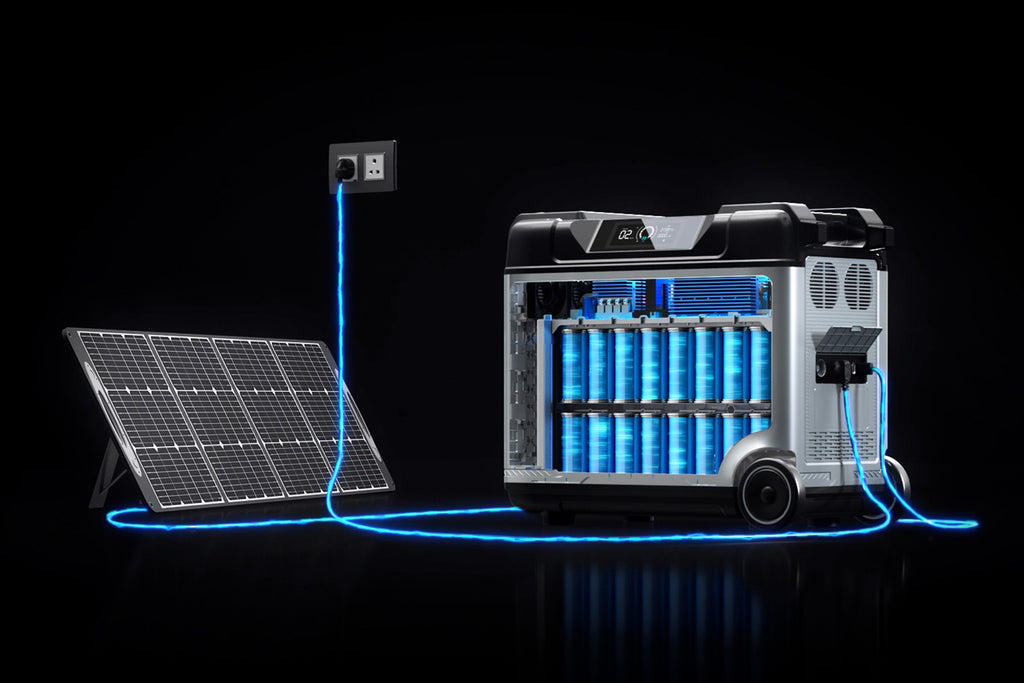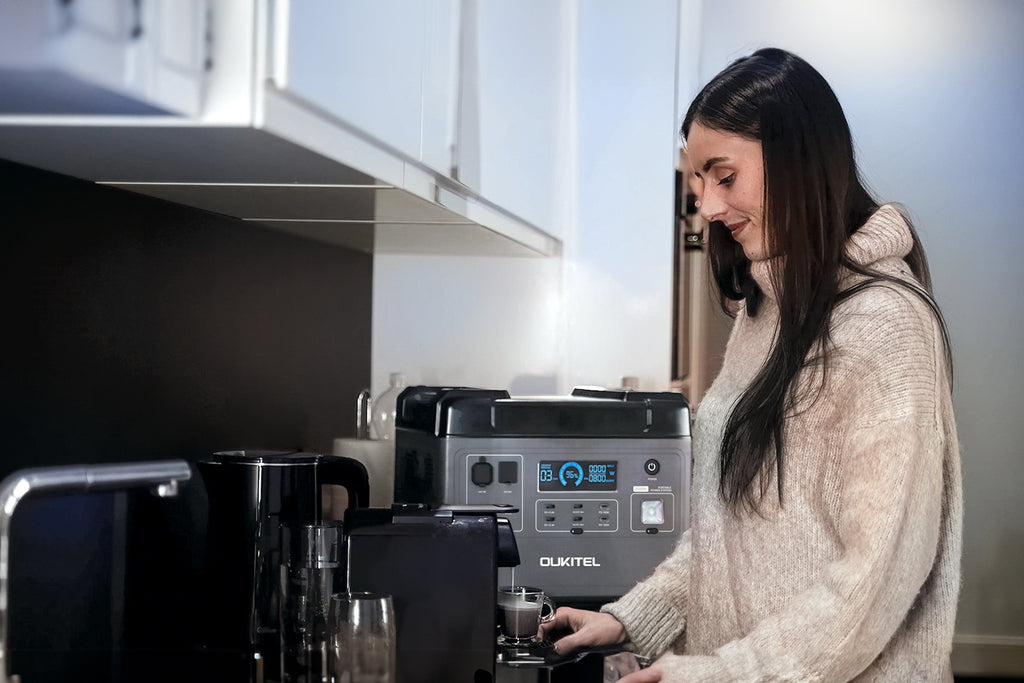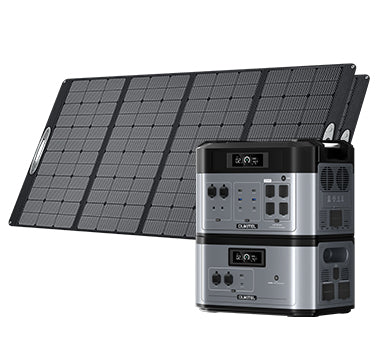LFP Home Battery Backups: A Safer, Longer-Lasting Alternative
Navigation
- I.Introduction
- II.Why home battery backups are important?
- III. Challenges with lithium-ion batteries
- IV. The advantages of LFP battery technology
- V. Benefits of using premium LFP batteries for home backup
- VI. Applications for LFP home battery backups
- VII. Additional considerations
- VIII. Conclusion
I.Introduction
Home battery backup systems should provide emergency power for essential equipment during outages while supporting smart home connectivity and renewable integration. However, the limited lifespan, questionable safety, and high maintenance of lead-acid or lithium-ion batteries pose challenges for whole-home solutions.
Lithium iron phosphate or LiFePO4 batteries offer an ideal alternative with intrinsic stability that eliminates fire risk even under adverse conditions, a rated life of 10-15 years with minimal capacity loss, and a maintenance-free operation. For residential security and sustainability, premium LFP home batteries deliver a high-performance, cost-effective backup power supply, and energy storage solution in one intrinsically safe package.

II.Why home battery backups are important?
Provide emergency power
Home battery backups provide emergency AC power for critical systems like refrigerators, medical equipment, lighting, and devices during outages, disasters, or other crises affecting power sources.
- Run essential equipment like refrigerators to keep food cold, sump pumps to prevent flooding, lighting, fans, and air purifiers. This ensures basic living necessities during extended periods without power access.
- Power medical equipment such as oxygen concentrators, CPAP machines, or mobility scooters used by residents. Home battery backups prevent life-threatening situations from power cuts affecting vulnerable individuals.
- Charge smartphones, tablets, and laptops to stay informed and connected. Home battery backups are necessary in emergencies where access to news and communication channels is critical.
- More emergency situations, you may also want to read: Top Reasons A Portable Power Station Is A Hunter's Best Companion.
Support smart home devices
Home battery backups power smart home technology and Wi-Fi Internet connectivity enabling:
- Remote home automation, including remotely locked/unlocked doors, monitored security cameras/sensors, and automated lighting control. Home battery backups keep smart home networks online during outages.
- Continual Wi-Fi Internet access for residential needs. Families can continue to use connected devices, streaming media, and more without disruption.
- Charging of Bluetooth trackers, smart watches, and fitness trackers. Many smart devices rely on continual connectivity and power to function properly with paired smartphones and apps. Home battery backups sustain these capabilities during normal daily usage as well as power outages.
Ensure connectivity during outages

Home battery backups charge and power devices that provide mobile connectivity and access to information during power interruptions:
- Tablets, smartphones, and laptops remain charged to stay connected and access news or emergency alerts.
- Wi-Fi routers and modems remain powered, allowing for Internet access and connected smart home components.
- Home automation, monitoring, and assistant devices like Alexa or Google Home stay online to control smart devices as needed. Connectivity is preserved for optimal convenience and security.
III. Challenges with lithium-ion batteries
Limited lifespan
The average lithium-ion battery loses capacity over time and through repeated charge cycles. After 3-5 years or 500-1500 cycles, a lithium-ion battery will typically hold only 60-80% of its rated capacity. For home backup power where long-term reliability is critical, this limited lifespan requires frequent monitoring and replacement to ensure adequate capacity during outages. However, frequent replacement of the entire home backup unit increases cost and waste.
LFP batteries provide a solution to this challenge through a rated lifespan of up to 15 years and thousands of charge cycles with minimal loss of capacity. Their exceptionally long-lasting performance minimizes replacement frequency and total cost of ownership for home backup power.
Risk of overheating
During operation or recharging, lithium-ion batteries generate heat which must be properly dissipated to avoid damage. If charged/discharged too quickly or overheated due to a short circuit, lithium-ion batteries can pose a risk of thermal runaway. The flammable electrolyte and tightly enclosed spaces of most home battery backups amplify hazards from overheating lithium-ion batteries.
In contrast, LFP battery chemistry is inherently non-flammable and stable. LFP batteries contain an iron phosphate cathode and electrolyte material that does not break down or combust at high temperatures. Robust thermal management and protective measures are built into LFP home battery backups to further eliminate risks of overheating beyond the battery cells themselves.
Safety concerns
Due to the potential fire and overheating risks, the volatility and relative instability of lithium-ion batteries raise safety concerns for residential use. Strict charging/discharging limits and cooling controls are required to minimize hazards, yet catastrophic battery failures remain a possibility if these systems fail or are improperly maintained.
LFP battery technology provides a fundamentally safer alternative through its non-flammable, chemically stable components. Without volatile or combustible materials, LFP batteries pose no risks of fire or thermal runaway, even in adverse conditions. For use in home environments, their unparalleled safety is paramount for consumer confidence and risk mitigation. LFP home battery backups earn the highest safety certifications to indicate their suitability for residential deployment.
Related: Portable Generator Safety Tips: Dos & Don'ts
IV. The advantages of LFP battery technology
Inherently stable chemistry
LFP batteries contain a lithium compound called lithium iron phosphate (LiFePO4) as the cathode material. Unlike the cobalt oxide used in lithium-ion, lithium iron phosphate is non-flammable and extremely stable even when overcharged or exposed to high temperatures. This intrinsically safe cathode chemistry eliminates risks of fire or thermal runaway under normal usage as well as adverse conditions.
Excellent charge retention
LFP batteries experience a very slow rate of self-discharge when not in use, losing only 3-5% of their charge per month. At room temperature, an LFP battery can retain up to 95% of its capacity for 6-12 months. This minimal self-discharge allows home backup systems to remain in standby mode for long periods until needed, ready to provide maximum runtime during outages. The extended shelf life of LFP also reduces impacts from long-term storage for backup power.
High cycle life and durability
Whereas lithium-ion provides 500-1500 cycles, premium LFP batteries deliver 3,000 to 7,000 full charge cycles with little reduction in capacity. When cycled properly, LFP batteries lose only 20-30% of their capacity over thousands of cycles. Their rated lifespan of up to 15 years with continual use drastically minimizes replacement frequency compared to lithium-ion. The unparalleled durability of LFP technology translates to real-world cost savings and minimal waste for home backup power.
Wide operating temperature range
LFP batteries perform well in a wide range of ambient temperatures, from -4°F to 122°F. Robust housing and thermal controls result in a normal operating range of 32°F to 95°F for most LFP home backup units. Their ability to function in extreme heat or cold provides power security year-round.
V. Benefits of using premium LFP batteries for home backup
Long lifespan of 3000+ charge cycles
Premium LFP batteries provide over 3,000 full discharge cycles with minimal loss of capacity. At one cycle per week, this equates to 10-15 years of service life for most residential needs. The extended lifespan of LFP batteries enables one set to last the lifetime of a home backup unit, eliminating frequent replacements required of lithium-ion.
Precise temperature control
LFP home backup systems feature advanced thermal management with regulated temperature controls, durable enclosures, and ventilation mechanisms. LFP batteries generate minimal heat during operation. However, precautions are still incorporated to maintain an optimal temperature range for performance, lifespan, and safety. Strict thermal regulation prevents overheating - the primary cause of issues in lithium-ion batteries.
Low maintenance
LFP batteries are maintenance-free, requiring no scheduled cycling or conditioning charges to prolong their lifespan like lead-acid or nickel-based batteries. They can remain on standby for extended periods without adverse effects, ready to provide maximum power during outages. LFP's minimal self-discharge and slow rate of capacity deterioration over time allow for installation and nearly infrequent replacement - the only maintenance needed.
Superior safety certifications
LFP home battery backups earn high safety certifications, such as UL 1642 and IEC 62133, which recognize their suitability for residential and commercial applications. These stringent certifications indicate the technology meets rigorous criteria for overheating, fire, and emission risks based on their design and chemistry. For home use, the safety of a battery backup system is of utmost importance. LFP's unparalleled thermal and chemical stability enables the highest safety ratings of any lithium technology.
Ecological benefits
LFP batteries contain no toxic lead, cadmium, or nickel. They emit no noxious fumes or gases even when overcharged. At end-of-life, LFP batteries are easily recycled into new batteries with minimal processing compared to lead-acid or nickel-based batteries. Their 'green' lifecycle from raw materials to recycling and closed-loop battery production has a much lower environmental impact overall compared to other chemistries. For a sustainable home backup power solution, LFP technology balances performance with ecological responsibility.
VI. Applications for LFP home battery backups

Emergency backup power
LFP batteries provide 4-6 hours of continuous emergency backup power for homes during outages or disasters. Homeowners can wire LFP battery units to essential circuits to power critical items like refrigerators, sump pumps, lighting, fans, and medical equipment. With additional battery capacity, backup times of 12 hours or more are possible for whole-home coverage.
Solar energy storage
LFP batteries are commonly used to store surplus power generated by residential solar panels. Their high cycle life and discharge efficiency make them ideal for daily charge/discharge cycles required in grid-tied or off-grid solar energy systems. Homeowners can harness and consume their own solar power on demand without reliance on their electric utility provider.
Electric vehicle charging
LFP home battery units can be programmed to charge at night when energy rates are lowest, then discharge during the day to charge electric vehicles. Such 'smart' energy management offsets fuel costs for EV owners. Excess battery power can also provide emergency backup for EV charging in a crisis. The high output and cycleability of LFP batteries facilitate these types of applications.
Uninterruptible Power Supply (UPS)
LFP batteries deliver temporary power to sensitive devices like medical equipment, servers, and computers in the event of a power cut or voltage spike. They seamlessly provide continuous power until a main supply can be restored or the equipment is shut off safely. Robust LFP chemistry is well suited for use in UPS to handle frequent discharge cycling.
Related: Power Surges Home Protection: Why You Need a UPS System?
Energy load shifting
Homeowners can charge LFP batteries at night when rates are low, then use their stored power as needed during on-peak, higher-cost daytime hours. This 'energy load shifting' reduces power costs for the home overall. Advanced energy management systems automate this process for optimal savings and performance. The minimal self-discharge rate and extended cycle life of LFP batteries make them an effective solution for calculated daily charge and discharge.
Portable power stations
Compact LFP battery units provide a portable AC/DC power source for RVs, camping, remote work sites, or during emergency events when access to mains power is unavailable. Multiple charging outlets support powering tools, appliances, devices, and electric equipment on the go. For portable LFP battery packs, safety, capacity retention, and cycle durability are essential -especially under environmental stresses. LFP chemistry is purpose-built to handle these types of mobile, temporary power demands.
VII. Additional considerations
Environmental impact
Although lithium iron phosphate is more easily recycled than other lithium battery types, material extraction does require heavy mining of lithium, iron, and phosphate. Additional processing and manufacturing efforts result in environmental impacts that should be considered based on a product's end-of-life and closed-loop recycling processes. For most consumers, LFP technology currently provides the best balance of performance and sustainability among lithium batteries. Continual improvements aim to mitigate environmental effects where possible while still enabling a highly efficient, stable, and safe product.
Cost and value
While LFP home battery backups carry a higher upfront cost than lead-acid or lithium-ion options, their lifecycle value is unmatched. Fewer replacements combined with an operating lifespan of 10-15 years offset their initial pricing through total cost of ownership savings. When factoring in added safety benefits, reduced waste, and minimal maintenance, LFP batteries provide the most compelling option for whole-home backup power from an economic standpoint. For residential systems where performance and safety are paramount, the enhanced quality and extended service life of LFP technology justify the investment.
VIII. Conclusion
Home battery backup systems should provide emergency power for essential equipment during outages while also supporting smart home connectivity and renewable integration. However, the limited lifespan, questionable safety, and high maintenance of lead-acid or lithium-ion batteries pose challenges for whole-home solutions.
Lithium iron phosphate or LiFePO4 batteries offer an ideal alternative with intrinsic stability that eliminates fire risk even under adverse conditions, a rated life of 10-15 years with minimal capacity loss, and a maintenance-free operation. For residential security and sustainability, premium LFP home batteries deliver a high-performance, cost-effective backup power supply, and energy storage solution in one intrinsically safe package.




































 Oukitel Flashlight
Oukitel Flashlight Oukitel Solar
Extension Cable
Oukitel Solar
Extension Cable

















Leave a comment